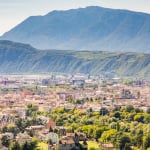Name: Konjin Falls
Address: Awamata, Otaki-machi, Isumi-gun, Chiba Prefecture, Japan
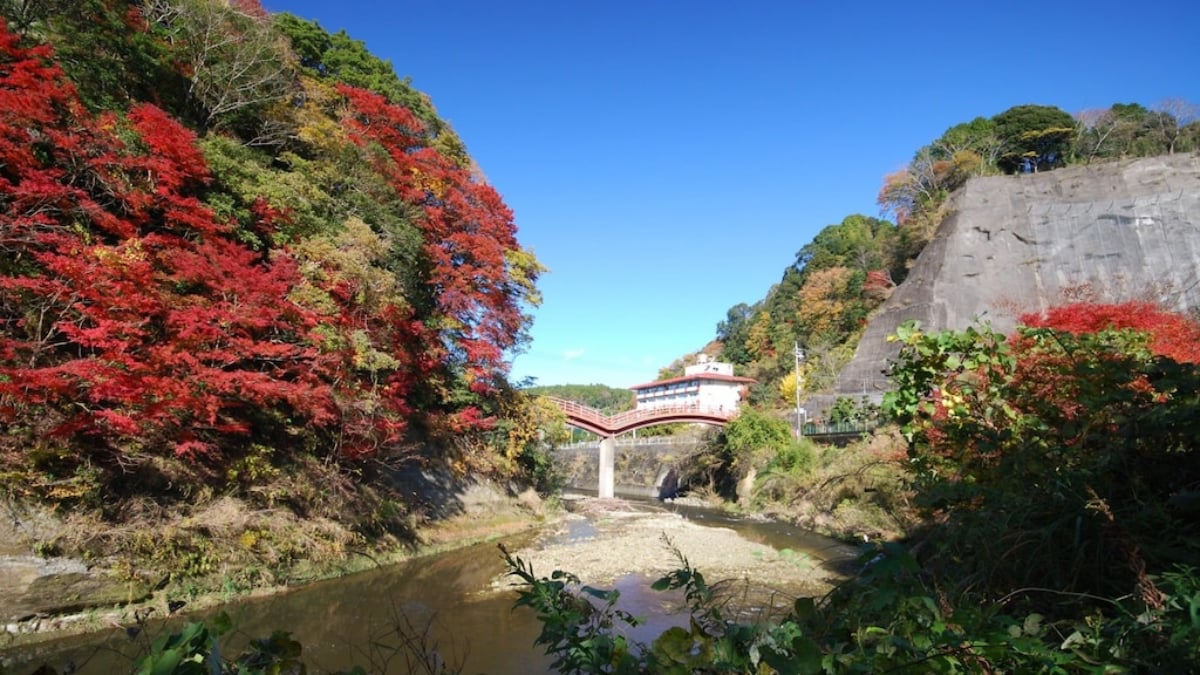
12 Recommended Tourist Spots in Yoro Valley: In Search of Hidden Lands in Chiba
Yoro Valley is a gorge that stretches across Otaki Town and Ichihara City in Chiba Prefecture. Known as a prime spot for viewing azaleas in spring and autumn foliage in fall, especially in November when the autumn leaves are at their peak, Yoro Valley attracts numerous tourists from all over Japan.
While Yoro Valley is a popular destination, it encompasses various attractions such as "Ozawamata no taki" waterfall and "Kōbundō" cave. This article will introduce 12 carefully selected must-visit tourist spots in Yoro Valley, a hidden gem in Chiba.
table of contents
[x] close
12 Recommended Tourist Spots in Yoro Valley: In Search of Hidden Lands in Chiba
1. Konjin Falls

Konjin-no-taki Waterfall, renowned as one of the Eight Views of Yoro, is a 35-meter-high cascade hidden behind a tunnel created by a river diversion project. Accessible from the parking lot of the Goryaku no Yu hot spring facility, a large torii gate marks the entrance to the waterfall.
The rock face surrounding the waterfall is dedicated to the gods of water, earth, and the sun, and an offering box can be found near the base of the waterfall. Further downstream, there is a river diversion tunnel known as the "Chie no Ana" (Well of Wisdom) that offers a unique view of Konjin-no-taki Waterfall through the tunnel.
2. Daifukuzan
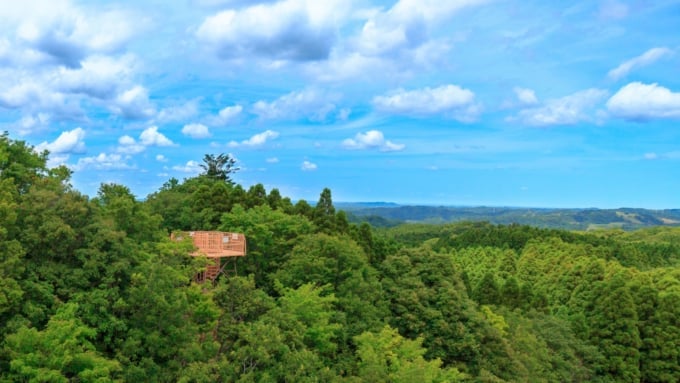
Daifukuzan, with an elevation of 292m, is the highest peak in Ichihara City. From the observation deck near the summit, you can get a panoramic view of the mountains of Yoro Valley.
The hiking trail that leads to Umegase Valley is a popular tourist route in Yoro Valley, and is especially crowded with tourists during the autumn foliage season. At the peak is Shiratori Shrine, which enshrines Emperor Yamato Takeru, so be sure to stop by and pray for a safe journey.
Name: Daifukuzan
Address: Ishizuka Sugikabatake 546, Ichihara City, Chiba Prefecture, Japan
Official/related website URL: http://www.youroukeikoku.com/spot/daifukuzan/
3. Umegase Valley
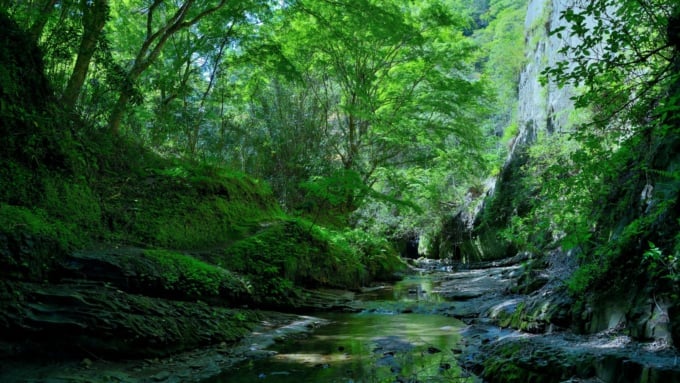
Carved out by the Umegase River, a tributary of the Yoro River, Umegase Valley is a stunning natural wonder. The name "Umegase" was given by Nobusane Hidaka, a Meiji-era educator who once lived in this area. Inspired by the famous plum grove of Tsukigase in Nara, he named this valley after it.
Umegase Valley is also renowned for its breathtaking autumn foliage. A particular highlight is the large maple tree near the former Hidaka residence. Every autumn, numerous tourists flock to capture the vibrant red hues of its leaves. This area is truly a sight to behold during the fall season, with its colorful carpet of fallen leaves.
Name: Umegase Valley
Address: Tomoemachi, Ichihara City, Chiba Prefecture, Japan
Official/related website URL: http://maruchiba.jp/sys/data/index/page/id/3396/
4. Kozawamata Falls
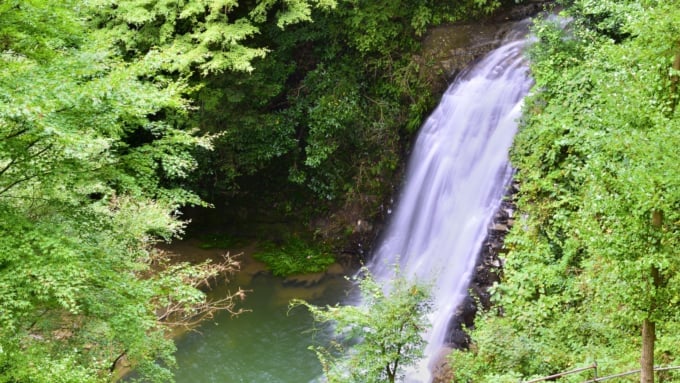
Ozawamata Falls, which was discovered by tourists who came to pick wild vegetables, is a popular tourist spot that is included in the waterfall tour course of Yoro Valley. It is made up of five waterfalls, from Ichinotaki to Gonotaki, and Ichinotaki is also known as the "phantom waterfall" because it disappears and reappears depending on the amount of water. From the observation deck of Garden Takinosato, a teahouse near the falls, you can see both Ichinotaki and Ninotaki at the same time. The teahouse is equipped with a restaurant, as well as an open-air bath and bungalows, so you can relax by taking a day trip or staying overnight. You can also descend to the basin of the falls, so if you're interested, be sure to check it out.
Name: Ozamata Falls
Address: 1007-1 Ozamata, Otaki-machi, Isumi-gun, Chiba Prefecture, Japan
5. Rikkokuji Temple
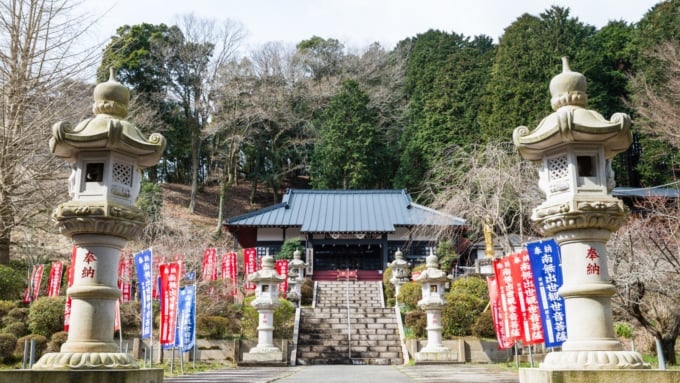
Crossing the Kannon Bridge from Yoro Onsenkyo, you will see Rikkokuji Temple, a famous good luck spot in the Yoro Valley. Rikkokuji Temple is also known for enshrining a Kannon statue that Minamoto no Yoritomo brought with him and praying for victory in battle. Later, it came to be known as the "Success Kannon" (Kannon of Mercy) after Yoritomo's heroic efforts in conquering the Kanto region and destroying the Heike clan. As it is a god of good luck and fortune that has been around for over 800 years, why not visit it while you're in the Yoro Valley?
Name: Shusse Kannon Rikkokuji Temple
Address: 401 Tomoemachi, Ichihara City, Chiba Prefecture, Japan
Official/related website URL: http://shusse-kannon.life.coocan.jp/
6. Awamata Falls
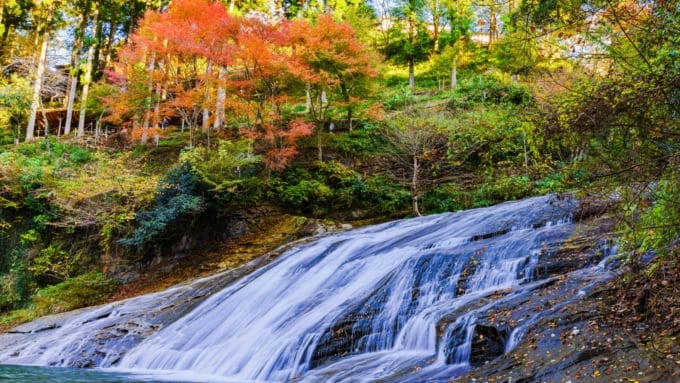
Located between Konjin Falls and Ozawamata Falls, Awamatata Falls is a major tourist spot that is said to be the most beautiful in the Yoro Valley. The waterfall, which flows 100m upstream of the Yoro River, is popularly known as Yoro Falls. You
may be captivated by the clear water sparkling off the rocks. The combination with the autumn leaves is also a must-see.
At Awamatata Falls, you can also enjoy stream fishing and playing in the water. However, be careful as the water level will increase and the flow will be faster the day after it rains. A promenade stretches for about 2km from Awamatata Falls to the Ozawamata Falls area, and you can stroll along the mountain stream surrounded by autumn leaves while listening to the murmuring of the river.
Name: Awamata Falls
Address: 157 Awamata, Otaki-machi, Isumi-gun, Chiba Prefecture, Japan
Official/related website URL: http://maruchiba.jp/sys/data/index/page/id/5699/
7. Mamenhara Plateau
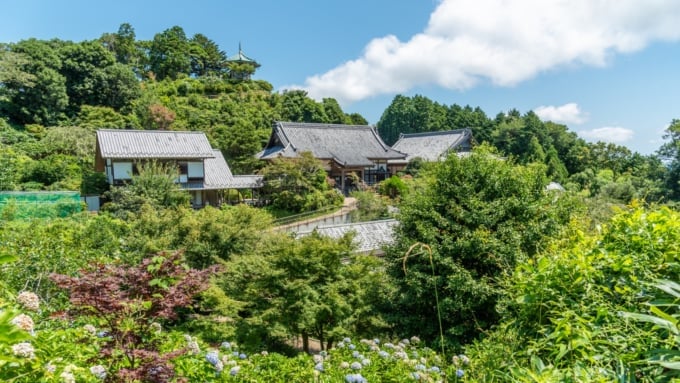
Mamehara Plateau is the Kanto region's leading hydrangea spot, with around 20,000 hydrangeas planted. The sight of the mountainside covered in blue, purple and pink hydrangeas is truly a sight to behold. Located at an altitude of 340m, the peak viewing period is from early to late July, later than most hydrangeas.
The center of Mamehara Plateau is the grounds of Myohoji Temple, which once stood here. Unfortunately, the temple was destroyed by fire and fell into disuse, but in 1953 it was rebuilt and 20,000 hydrangeas were planted, bringing it back to life as a spectacular hydrangea spot. Incidentally, Myohoji Temple is also the place where Saint Nichiren first chanted "Namu Myoho Renge Kyo."
Name: Mawarabara Highlands
Address: 1749 Tsutsumori, Otaki-machi, Isumi-gun, Chiba Prefecture, Japan
Official/related website URL: https://maruchiba.jp/sys/data/index/page/id/5712
8. Kobundo Cave Ruins
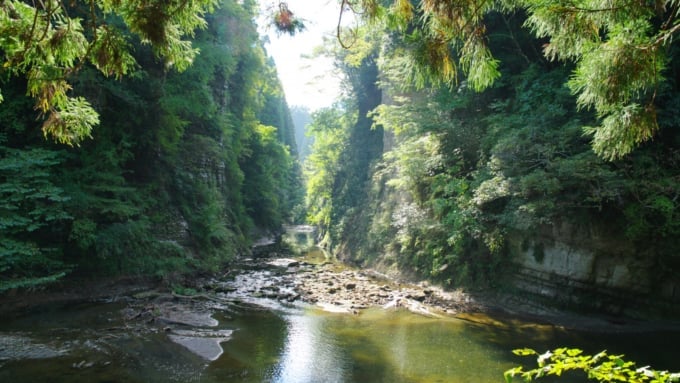
The Kobundo Cave Ruins are the remains of a tunnel that was built to divert a river. River diversion is a construction method unique to this region, where meandering rivers are straightened out using tunnels and cuts, and rice fields are built in the original riverbed.
Kobundo Cave also previously had a tunnel-like top, but it collapsed in 1979, leaving it in its current form. Even so, it still has the same impressive presence as it once did.
Name: Koubundou Ruins
Address: Odayro, Otaki-machi, Isumi-gun, Chiba Prefecture, Japan
9. Okuyoro Village
Okuyoro Bungalow Village, which was closed due to typhoon damage in 2019, has reopened under a new name, Okuyoro Village.
If you want to enjoy the outdoors around the Yoro Valley, Okuyoro Village is recommended. If you bring your own ingredients, you can enjoy a day trip BBQ with rental equipment. There are many tourist spots in the area, and you can experience playing in the water and stream fishing in the Yoro River, as well as bird watching, so you can choose from a wide variety of activities. Futons and pillows are also available for rental during the season.
Name: Oku-Yoro Village
Address: 746 Tomoe Aza Kamashiro, Ichihara City, Chiba Prefecture, Japan
Official/related website URL: https://okuyorovillage.com/
10. Kannon Bridge

Kannon Bridge, a beloved landmark of the Yoro Valley, is an arched bridge that connects the Yoro Onsen hot spring resort and Rikkokuji Temple.
It underwent renovation work from March to April 2019, and was reborn in a vibrant vermilion color. From Kannon Bridge, Shiratori Bridge, Hoei Bridge, and Fukaya Bridge lead downstream, so it might be fun to enjoy visiting the bridges as you stroll along the river.
Name: Kannon Bridge
Address: Tomoe, Ichihara City, Chiba Prefecture, Japan
Official/related website URL: https://maruchiba.jp/sys/gallery/detail/photo/photo-id/288/
11. Nakase Promenade
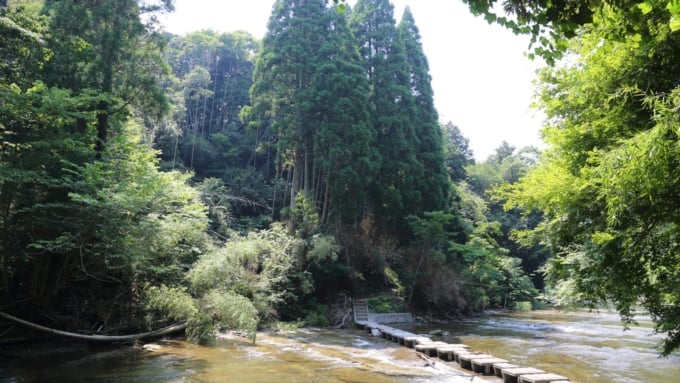
Nakase Promenade is a 1.2km long promenade that starts near Kannon Bridge and continues to Kyoei Bridge. The path is well-maintained and flat, so it is recommended for a wide range of ages, from children to the elderly. It also passes by the remains of Kobun Cave, a famous spot in the Yoro Valley, so be sure to stop by. Nakase Campground is convenient for overnight sightseeing.
Name: Nakase Promenade
Address: Kattou, Otaki-machi, Isumi-gun, Chiba Prefecture, Japan
Official/related website URL: https://maruchiba.jp/sys/data/index/page/id/5705
12. Tsutsumori Momiji Valley
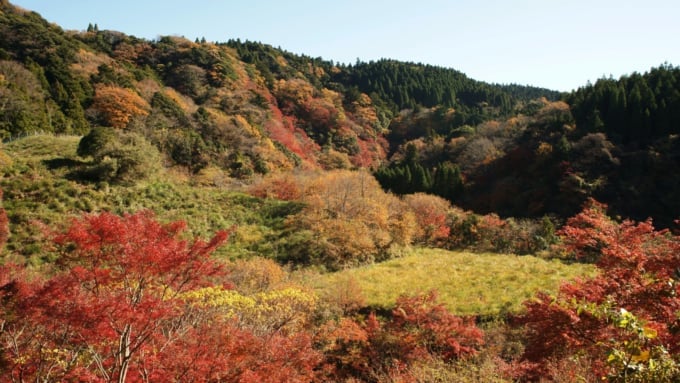
Yoro Valley is famous for its autumn leaves, and Tsutsumori Momiji Valley is where you can see the most beautiful autumn leaves. However, it is difficult to access, so few people visit, making it a hidden gem worthy of its name of a hidden gem.
From where National Route 465 (Kiyosumi Yoro Line) intersects with the Yugi River, go about 150m towards Lake Kameyama and turn left onto a narrow road. Continue along that road for about 1km and you will see Tsutsumori Momiji Valley. Yoro Valley gets crowded with tourists during the autumn foliage season, but here at Tsutsumori Momiji Valley you may be able to have the spectacular view all to yourself.
Name: Tsutsumori Momiji Valley
Address: Tsutsumori, Otaki-machi, Isumi-gun, Chiba Prefecture, Japan
Official/related website URL: http://www.youroukeikoku.com/spot/tutumori/
◎Summary
Known as one of Chiba Prefecture's hidden gems, Yoro Valley is a treasure trove of natural attractions. With its abundance of lush greenery, cascading waterfalls, and serene hiking trails, it's no wonder that this area has become a popular destination for nature lovers.
One of the highlights of visiting Yoro Valley is the opportunity to relax and rejuvenate in the Yoro Onsenkyo hot spring district. Nestled amidst the stunning natural surroundings, numerous ryokans (traditional Japanese inns) and minshuku (bed and breakfasts) offer a variety of accommodations to suit every traveler's needs. Imagine soaking in an open-air bath while admiring the breathtaking views of the valley.
RELATED ARTICLES
REGIONS
CATEGORIES
FEATURED ON Japan
-
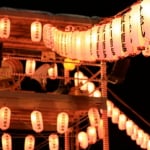
Not Just Fireworks! Introducing 3 Popular Festivals Around Kitasenju
-
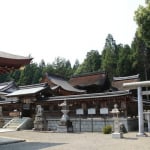
5 Must-See Tourist Spots in Ryūō Town – Deeply Historical Sites That Even History Buffs Will Love!
-
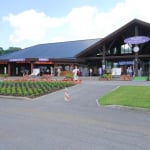
Full of Sweet and Delicious Local Specialties! 4 Popular Souvenirs You Can Buy in Numata City, Gunma Prefecture
-

What is Yokohama Sea Bass?|Introducing Fares and Sightseeing Routes!
-
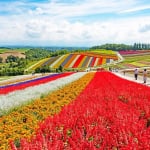
Where will you go for the summer vacation? Introducing recommended spots for domestic travel
MOST POPULAR ON Japan
-
 1
1Doha: Must-see Attractions in the Capital of Qatar
-
 2
2Toronto: 10 Things to do in this Picturesque Canadian City
-
 3
3Amarillo: A City Famous for It’s Amazing Canyons, Great History and Music
-
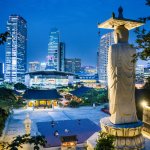 4
4South Korea: Dazzling Scenery, Rich Culture and Fascinating History
-
 5
5Kuwait: A Country in Middle East Asia Famous for Hot Sand Dunes and Stunning Cityscape





